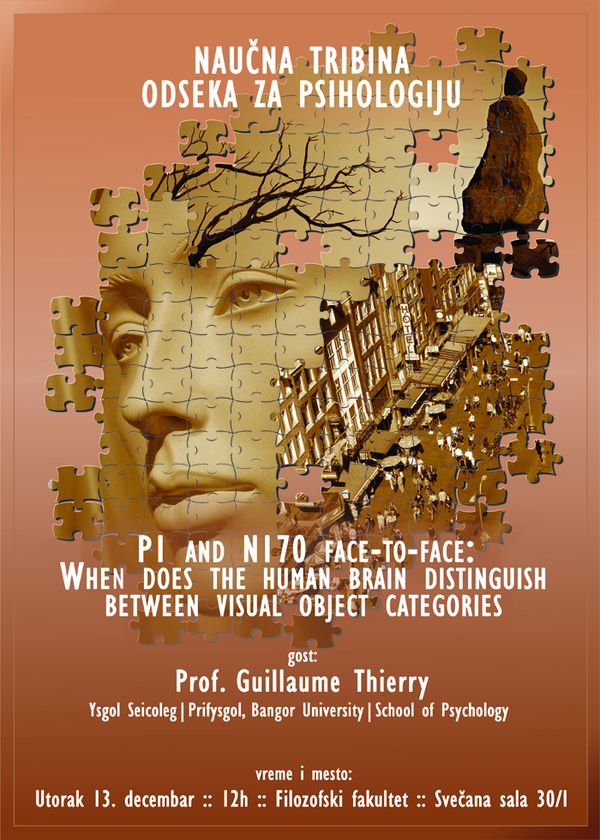| |
Početna > Vesti>
U utorak, 13. decembra, u 12h, u Svečanoj sali Filozofskog fakulteta u Novom Sadu gostuje:
Prof. Guillaume Thierry,
Ysgol Seicoleg | Prifysgol, Bangor University | School of Psychology.
Govoriće na temu:
P1 and N170 face-to-face: When does the human brain distinguish between visual object categories
Svi ste dobrodosli!
Abstract:
The human face is the most studied object category in visual neuroscience. In a quest for markers of face processing, event-related potential (ERP) studies have debated whether two peaks of activity –P1 and N170– are category-selective. I will briefly present datasets from six studies involving two-by-two experimental designs showing that P1 mean amplitude significantly distinguishes faces from cars –an object category often compared to faces– independently of modulations elicited by inter-stimulus variability, external feature cropping, and inter-category morphing: (1) By manipulating randomly generated inter-stimulus variability (high vs. low) and object category (cars, faces, butterflies), I show that P1 is weakly sensitive to variability but robustly category-selective, whilst the N170 unexpectedly shows the reverse pattern of response (Thierry et al. 2007; Dering et al., 2009). (2) By manipulating stimulus integrity via deletion of peripheral features of faces (hair, ears, and neck) and cars (rooftop, wing mirrors, and wheels), I show that cropping artificially increases N170 but not P1 amplitude and leaves P1 category-sensitivity intact. (3) When morphing full-front views of faces and cars to different extents, P1 category-selectivity resists 30% contamination of one category by visual information from the other category, whilst the N170 fails to respond to the amount of face information embedded in the stimulus. In sum, the N170 peak of visual event-related brain potentials is highly sensitive to factors other than object category, whereas P1 amplitude is modulated in a face-selective fashion as early as 100 ms after picture onset.

|
|



